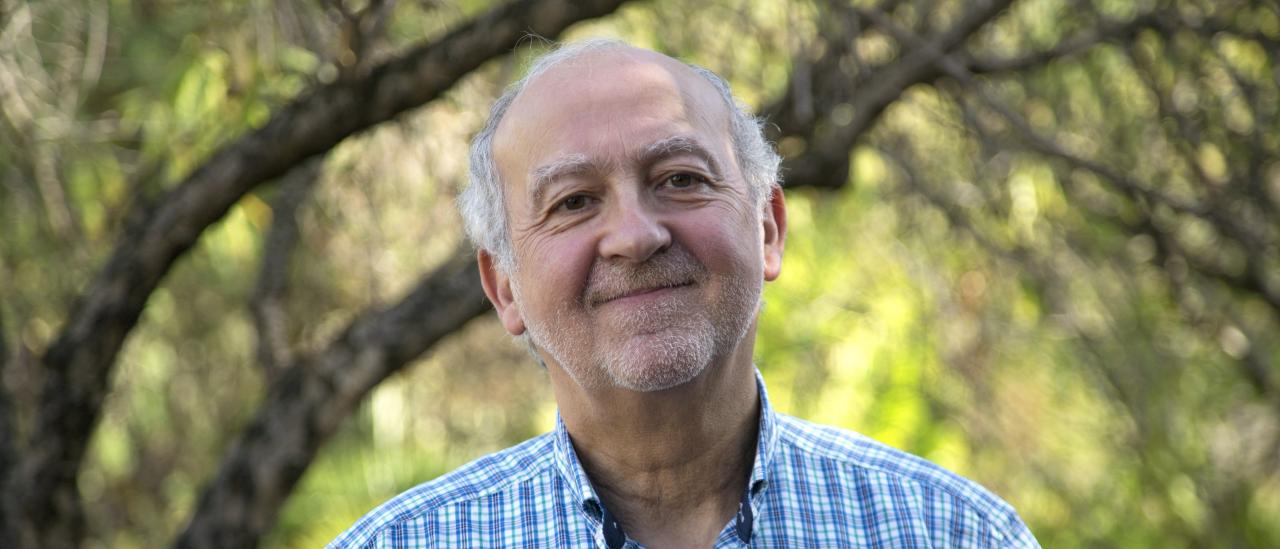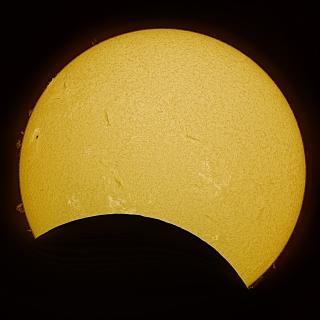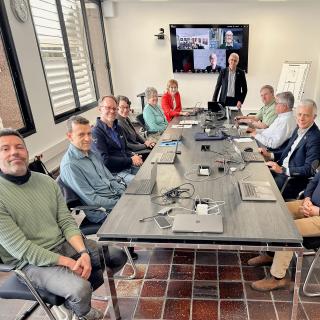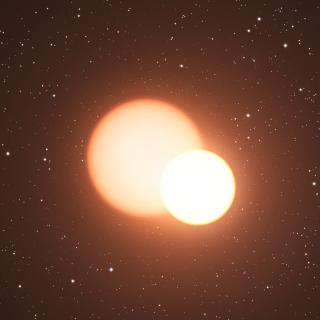At the next General Assembly of the International Astronomical Union (IAU), to be held in Korea in 2021, José Miguel Rodríguez Espinosa, a researcher at the Instituto de Astrofísica de Canarias will be named Secretary General of this, the biggest international astronomical organization, with over 13,500 professional astronomers in over 100 countries. For the time being he has been named Assistant General Secretary so that, afterwards, he will be able to take over the Secretariat. He will be the first Spaniard to occupy this position, which he will hold from 2021 to 2024. Rodríguez Espinosa, born in Granada and an expert in infrared astronomy, active galaxies, and star formation, was a lecturer at the Complutense University of Madrid, Research Coordinator of the IAC, project scientist for the Gran Telescopio Canarias (GTC) and founder member of the Spanish Astronomical Society of which he was President for four years, and of the European Astronomical Society (EAS). He is dedicated to outreach, and has, until this year, been the leader of the ENCIENDE project, whose aim is to improve science education in primary schools.
1. You area Physicist by training. Why did you end up leaning to Astrophysics and how would you describe your degree studies?
I was always interested in research, in mathematics, physics and in music. I studied theoretical physics in Zaragoza, but in California, where I was working for my doctorate, I moved towards something more applied. For sure the Professor with whom I worked at first, the discovery of the ρ particle (William R. Frazer) went off to Berkeley. For that reason, as I was already interested in astronomy and there was a good centre at the University of San Diego, I changed and worked for my thesis in Astrophysics at the Centre for Astrophysics and Space Research (CASS).
2. In what field of research have you specialized?
At first, I specialized in Infrared astronomy, which was just beginning, and they used one dimensional detectors with a single pixel. We worked with an array of 12 detectors in line. I remember observations with the 5m telescope at Mount Palomar. Then, because of the demands of the science I wanted to do, I made optical observations. And now I am interested in observational cosmology, a field in which I have been working since I finished my work at the GTC.
3. What has Infrared Astronomy given us, and what can it give us?
Infrared Astronomy is crucial for many studies, from active galaxies, cool stars, and exoplanets, etc. but also for observations of the early universe. The red shift caused by the expansion makes us see all the objects in the early universe in the infrared.
4. What results make you proudest?
Of my first article, in which I compared the galaxy M82 with Orion. To explain M82 100,000 Orions are needed. The curious thing is that from X-ray to radio observations everything fitted. As a recent result I am most satisfied to have characterized the first ionized bubble at a redshift of 6.5, before the reionization of the universe, and of course I am proud of having contributed to the scientific success of the Gran Telescopio Canarias.
5. What is the IAU and what functions does it serve? And given the quantity of international organizations whose utility is sometimes questioned, how important is it for the IAU to come up to date?
The International Astronomical Union (IAU) founded in 1919, is the biggest international astronomical association. Its mission is to promote and look after Astronomy in all its aspects, including research, communication, education and development,, via international cooperation. It is also the recognized international authority for naming heavenly bodies. The IAU includes the largest number of professional astronomers (13,500). It is the professional organization which represents world Astronomy. I am now in a learning process, and there are many questions for which I need answers. Apart from the General Assembly every three years the IAU organizes some nine Symposia per year in all branches of Astronomy. And of course it deals with gender equality, the inclusion of people with discapacity and with education. The IAU does a lot of work in outreach, and tries to decentralize its activities. There are, for example, offices for Astronomy in Development in Capetown, for outreach in Tokyo, and for Young Astronomers in Oslo, which organizes international schools for countries which want to consolidate their universities and institutions for research in Astronomy and in its associated technological development.
The IAU has, for the first time, a strategic plan for the next ten years, 2020-2030. It is a Society which is changing continuously, as its Executive Committtee changes every three years. So that every three years there are new people and new ideas. And it is an organization which takes equality very seriously. In fact the three most recent presidents have been women, the first was Silvia Torres, of Mexico, now it is Ewine van Dishoeck, Professor at the University of Leiden in the Netherlands, and the next one will be Debra Elmegreen, of the United States.
6. What will be your aimes, and what is the degree of responsibility of this job?
The Secretary General does the day to day work of the IAU. This includes approval of the budget and of the Symposia, organizing the General Assembly every three years, etc. One can say that the person who is President represents the IAU, while the Secretary General is like a Prime Minister.
7. Will it mean giving up research to carry out more adminstration?
I hope not.. My commitment is to spend one week every month at the central offices of the IAU, fully dedicated to the work of the IAU. In the intervening weeks, there is still work to do, messages video-conferences…but it is not full time work, and of course it is not paid.
8. What could the IAU do to promote scientific vocations among young people and especially among girls?
The IAU sets great store by policies of inclusion and gender equality, as is shown by the fact that three women in succession, Silvia Torres-Peimbert, Ewine van Dishoeck, and Debra Elmegreen, have been presidents. They are examples to follow. Also the present Secretary General is Teresa Lago, of Portugal. These are good examples for girls, who can see women in important posts. But this is not all. The IAU promotes the incorporation of more girls in STEM. There are many talks and activities throughout the world aimed at girls, to guide them to professional possibilities in science and technology.
9. And what plans are being carried out, or foreseen, to take Astronomy to developing countries?
The IAU takes its role in Astronomy for Development very seriously. There is an office dedicated to this, with headquarters in South Africa, and its main activity is to support projects in Astronomy for development throughout the world. In fact, one of its key projects is the electrification of remote villages in the Himalayas with photovoltaic panels. This is complete with apprenticeship for the local population in the use of a telescope to promote rural tourism. In addition, through a local initiative, the inhabitants offer lodging to the astro-tourists, which improves the economies of these rural enclaves.
Here in Spain we also have initiatives of this type, (galileomobile/amanar) such as the project Amanar aimed at Saharaui refugees and in which personnel from the IAC have participated. This project in particular was chosen as a “special project” of the IAU in the framework of its centenary. Recently, Sandra Benitez Herrera, an outreach astrophysicist in the Unit of Communication and Scientific Culture (UC3) of the IAC and coordinator of this project, has been named as our national representative in the European Regional Office of the IAU for Astronomy for Development (E-ROAD).
10. What new information about the Universe will we get from the future Megatelescopes, such as Thirty Metre Telescope (TMT)?
Development in Astrophysics has been possible thanks to bigger and bigger telescopes with their advanced instrumentation. This has been the case with the Gran Telescopio Canarias (GTC) highly prized by the scientific community. The telescopes of the future will be called on to revolutionize, once again, our concept of the Universe. There are still important questions for which we don’t have answers, such as the nature of dark matter and dark energy. In the case of dark matter I think we will see developments with future telescopes. The same is true in the search for Earth-like planets or the first galaxies.
11. In what scientific discovery of the century would you like to participate?
I would like to find the first galaxies which formed when the Universe was barely 400 million years old.



